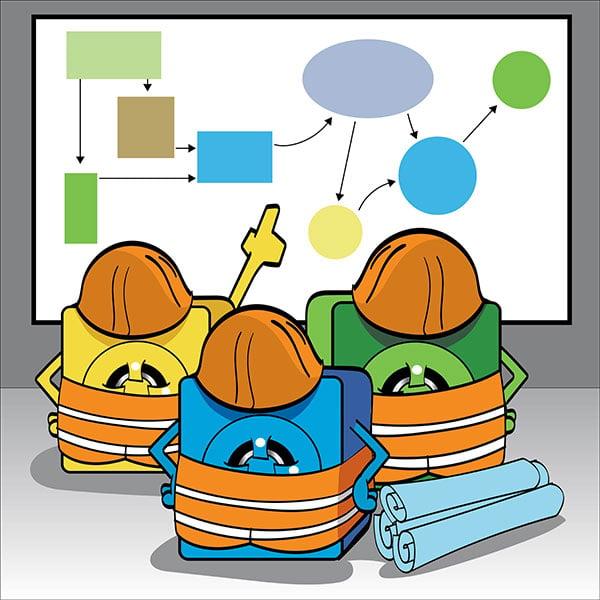Lesson Modules
Teaching Tips:
Outline:
- Class & Teacher set expectations
- Students play with Cubelets without Battery
- Teacher passes out Battery
- Students practice turning the Battery on and off
- Students explain what is happening
Introducing Cubelets without the Battery is a helpful classroom management trick. You set the precedent that students should plan and think together before beginning the project. In the future, if they get ahead of themselves, you can take the Battery again and ask your students to complete the planning process first.
Before class, plan your groups - think about what collaboration structures make the most sense for your class or your school. Possible team roles:
- Materials Manager
- Team Leader(in charge of making sure group stays on task)
- Recorder
Pacing:
5 minutes: introduce learning target and success criteria
10 minutes: set collaboration norms and expectations
5 minutes: open-play
5 minutes: introduce Battery
15 minutes: open-play with Battery
5 minutes: reflect
- Before class, use one group's Cubelets to build a Fraidy-Boy (also known as Run-Away Rick): Drive Cubelet + Battery Cubelet + Distance Cubelet (minute 00:44 of this video). While introducing it to the class, show students the Fraidy Bot on a flat surface. It will run away from your hand before the first question. Then ask the students to share their observations while you take apart the blocks and assemble them in different orientations.
- Depending on their skill level, you can have your students either write their observations or share them verbally.
Today we are going to work in groups to build robots!
Teaching Tips:
TIPS:
- Plan student groups.
- Think through the collaboration norms ahead of time so you facilitate your students' thinking.
- Wrap up the conversation by reviewing the group norms, separating students into groups, and assigning roles within each group.
- Once students are in their groups, have them explain to the other group members what their role is.
- Some teachers like to use visual cues (like a necklace or a hat) to represent each group role.
- It is recommended that one of your group norms is: Be respectful of materials. Cubelets are made for children and can sustain the hazards of normal play (falling off low tables, for instance), but they are also machines that can break. Students may need help remembering to be gentle with the Cubelets.
- Students can answer the activity questions verbally or in writing.
Today, you will have the opportunity to build robots with your group, but before we begin, we need to talk about what it means to work in a group.
Teaching Tips:
Have the Materials Managers pick up their trays of Cubelets (or pass Cubelets out to each group, if you do not have a Materials Manager role). Double-check that groups do not have the Battery Cubelet yet.
Groups play with their Cubelets.
The goal of this open play time is for students to practice their group roles and to get familiar with how Cubelets attach. After students have explores the Cubelets, pass out Battery Cubelets to the groups that are ready. Some things to observe as you walk around the room:
- Look for students and groups who are rotating single Cubelets within their robots
- Look for groups that are trying to build specific robots vs. using the Cubelets as passive stacking towers.
- Pay attention to students adhering to the expectations associated with their group roles.

Now, play!
Teaching Tips:
- Make students share out their experiences.
- If you have enough time, have each group try attaching a Battery to their robots and turn the Battery on and off.
- Make the materials managers put away Cubelets.
- Depending on their age, some students will be only interested in using Cubelets as building blocks as opposed to robots. Today, let these students play in this way but make notes of which students are at this developmental level because they may need fewer blocks for future lessons until they get used to what Cubelets can do.
- For students who are ready to build robots that do things, make sure they have a Battery Cubelet as early as they can. Then consider asking them to find a way to build a robot with only three blocks. (Hint: one of the blocks will need to be the Battery!)
- Students can share out load depending on their writing skills.



